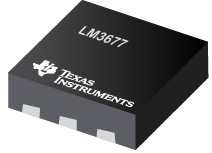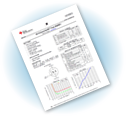How 3D printed motor nodes became a gamechanger in e-bikes

Motor nodes are one of the hardest e-bike parts to manufacture. When GSD Global turned to Sandvik’s experts in metal powder and additive manufacturing, to 3D print their motor nodes in titanium, they found they could achieve a lighter, more durable and much more energy efficient solution.
GSD Global is an engineering and design consultancy with long standing experience in creating premium electronic bicycles, or e-bikes. Heading the organisation is Zach Krapfl, an electric vehicle engineer based in Paonia, Colorado, in the United States.
Krapfl is dedicated to global energy conservation and reducing fossil fuel consumption - and combines bicycles, light electric vehicles and renewable energy technologies as a catalyst for sustainable transport.
As with any artform, high end bicycles are typically handcrafted to satisfy the specific palate of true bike connoisseurs. “Handmade bikes are pieces of art to begin with. So, if we can provide these high end bicycle makers with a material that can make their bikes last 10 to 20 years, that’s a game-changer to them,” said Krapfl.
GSD Global works with various bicycle OEMs (Original Equipment Manufacturers), with the majority of their design work focusing on e-bikes. For almost a decade, they’ve been partnering with Bosch e-bike systems to testify that, up until recently, e-bike uptake has been slow. Part of the explanation is thought to be that titanium parts such as the motor node that holds the electric motor onto the bike frame are very difficult to machine using traditional CNC processes - and costly at that.
When GSD Global turned to Sandvik to investigate the possibility of 3D printing their titanium components, they found that by developing the design of the motor nodes and adapting them to be additively manufactured, they could reduce their costs by more than 50%.
Using powder bed fusion laser technology, Sandvik 3D printed the motor nodes using its Osprey Ti6AI4V powder. Typically, these grades are used in the medical, aerospace, automotive and engineering industries for applications that require significant weight saving while maintaining high strength and performance. The motor nodes then underwent heat treatment and sandblasting during post processing.
By providing their OEMs with Sandvik’s 3D printed titanium motor nodes, GSD Global can help them to create e-bikes that will not only cost less and thereby be increasingly sellable, but can also last longer and with increased energy efficiency.
After mastering 3D printed motor nodes, and with the launch of Sandvik’s new titanium plant, its Osprey metal powders, materials expertise and leading capabilities across the additive value chain, the possibilities for additively producing other bicycle parts seem endless.
Similar articles
More from Sandvik Materials Technology
- Innovation to foster a sustainable future 26th May 2021
- How 3D printed motor nodes became a gamechanger in e-bikes 22nd September 2020
- How Sandvik has encouraged steel circularity 3rd September 2020
- How can we sustainably manufacture steel? 17th August 2020












Write a comment
No comments